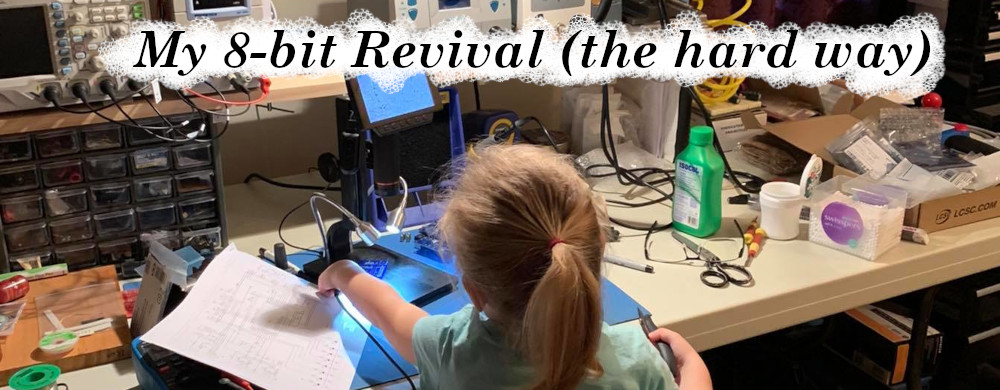Gonbes 8220 and C128 RGBI
I have quite a number of C64's, C128's and Amigas, but I only have one proper monitor.
New TV's really don't really work very well so off to the inter webs I went.
I've been looking at heaps of projects for RGBI conversion for the C128. None really took my fancy until I saw this one from Mattis Lind, it was small, it was compact and it was surface mount.
The only thing I didn't like about it was the connections. I'd rather have them on board than solder wires on to the board. Luckily it's opensource and the Tool Mattis used was probably the easiest PCB design tool I've ever tried ( I've given up on every other one ).
So I added in some bits including mounting holes. I did make one mistake and that was to break the ground. I used a jumper to fix that with the original holes for the wires that I left in place.
As you can see the over all result was really neat with all of the colours displaying nicely.
Gonbes 8220 and Amiga RGB
I also wanted to get my Amiga's working nicely on a monitor too and not the TV I was using. The colours were really washed out. The pin out on my Amiga monitor cable was not compatible with the RGBI board. However I was able to use it a as template to build a nice connector to the Gonbes unit on a bare RBGI card PCB ( note it's just point to point wires and a resistor, nothing else ).Details for the hook up came from this link
Which I found under this video
As you can see the results are pretty good.
(The monitor I used to test was really crappy)
Comparing the Amiga Board to the C128 Board.




























